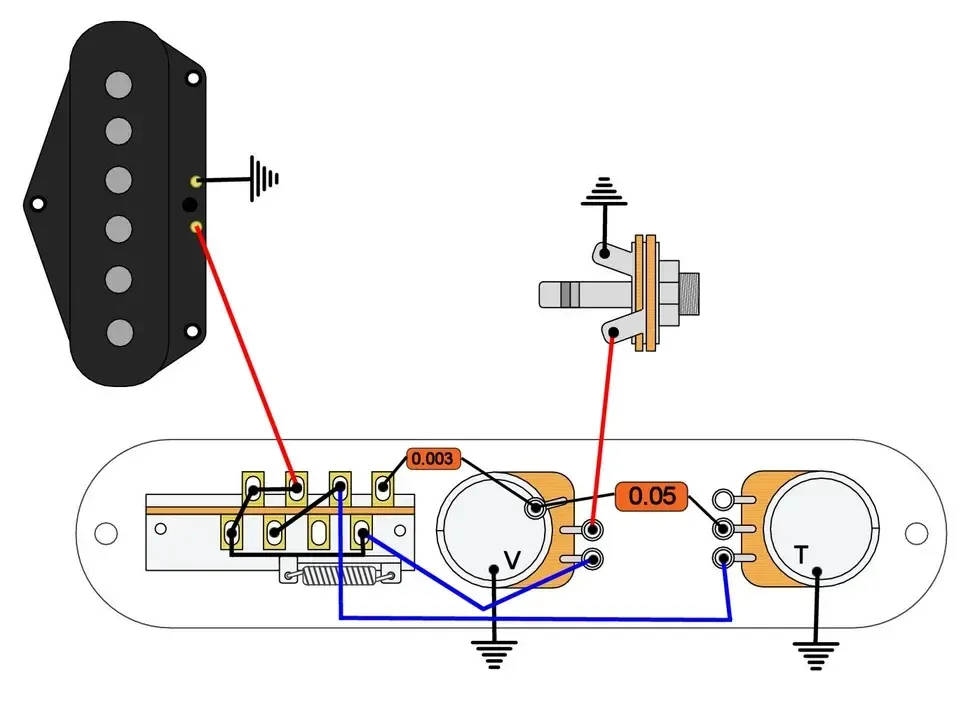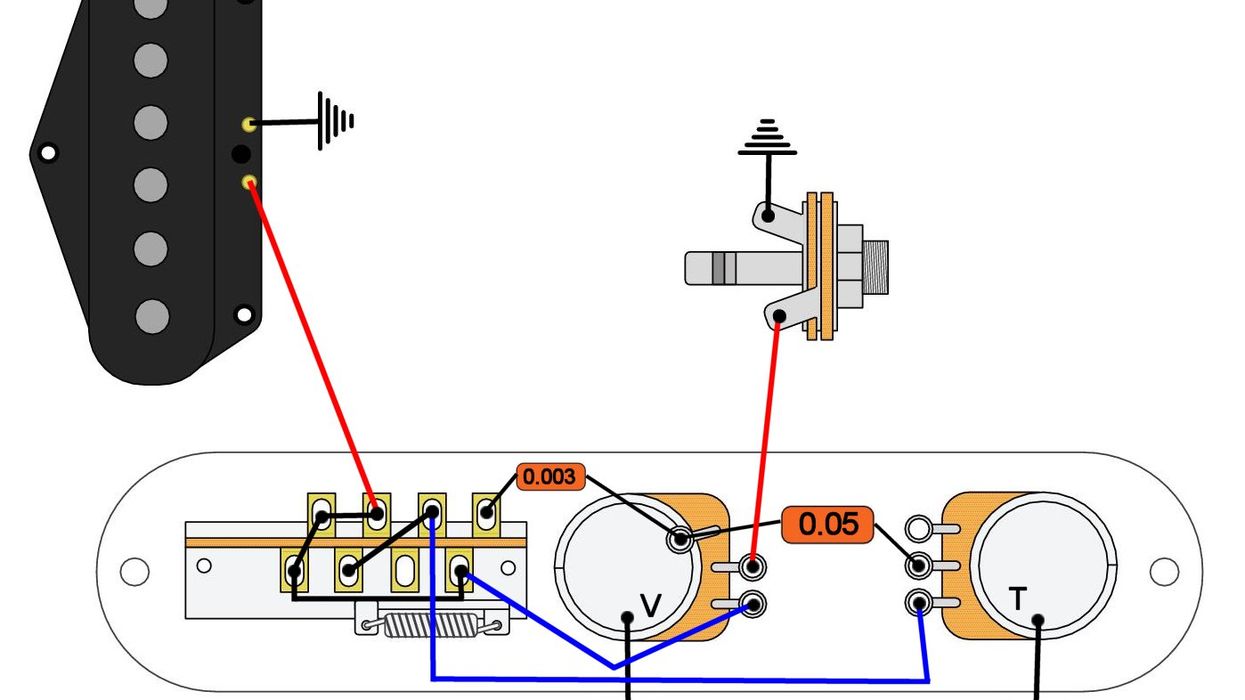Hello and welcome back to Mod Garage. This month, we will honor and remember the great Jeff Beck by taking a deeper look into his guitar arsenal and analyzing how you can come close ... at least electrically.
It was a really sad day for the music world on January 10, 2023, when Jeff Beck passed away at age 78 from a bacterial meningitis infection. He was, for sure, one of the best and most valued guitarists ever, influencing countless players all over the world with his unique tone and style. I don’t think I have to mention that using the same gear will not make you sound like Jeff Beck—his playing chops are close to unreachable. But it can help you to sound closer to Beck’s tone, so let’s have a look into a few of his guitars that I think are the most important.
When we talk about Jeff Beck’s guitars, we are also talking about pickup mastermind Seymour Duncan, who was a close friend of the guitarist. Duncan is the brains behind many of the guitars that Jeff Beck played during his outstanding career.
1. The Tele-Gib
This is the guitar that started the lifelong friendship between Beck and Duncan back in 1974, when Duncan was working in London as a guitar tech at the Fender Soundhouse. (The Fender Soundhouse was a huge store in London during the ’70s.) You can hear this guitar on “Cause We’ve Ended as Lovers” from Blow by Blow.
In 1974, when Beck was recording in the CBS studios near the Soundhouse, Duncan restored a butchered 1959 Fender Telecaster to working condition. To combine the best of both worlds, he installed two rewound PAF humbuckers, saved from a smashed 1959 Gibson Flying V that previously belonged to guitarist Lonnie Mack. Because the Telecaster did not have a curved top like a Les Paul, they were installed in flat, white humbucker frames, and since the original Telecaster bridge was missing, Duncan installed a Gibson stop-bar tailpiece and an ABR-1 bridge. Duncan presented this Gibson-ized top-loader Tele to Beck, and he instantly fell in love with it. The rest is history, as they say.
“You can order a Telecaster body with two humbucker routings without any problem. That was not even conceived of back in the early ’70s.”
Building a copy of this guitar is much easier today than it was back in 1974. You can order a Telecaster body with two humbucker routings without any problem. That was not even conceived of back in the early ’70s, so Duncan had to put a lot of work into this guitar. Finding a pickguard with humbucker cut-outs is also no big deal today.
If you want to come close to this guitar, you should choose a Telecaster body made of ash or swamp ash, and a 1-piece maple neck. You also need a stop-bar tailpiece, an ABR-1 bridge, and a standard Telecaster control plate with master volume, master tone, and a standard 3-way pickup selector switch. You can choose any PAF humbucker copy that is close to the ’59 specs—a standard two-conductor wiring will be fine. In the original guitar, the pickups do not have a metal cover, exposing their zebra bobbin arrangement. It’s important to also use pickups without metal covers if you want to get as close as possible. Duncan used 500k pots for volume and tone, along with a 0.047uF tone cap and a standard Telecaster 3-way wiring: bridge/bridge + neck in parallel/neck.
You can use any standard Telecaster wiring diagram for this. It’s a normal Telecaster wiring with two humbuckers—no split, no series switching, no phasing or any other gimmicks. Naturally, you can tweak the wiring to your taste and implement some mods and add-ons. Beck was happy with the guitar the way it was, so it was never modified.
2. The Fender Jeff Beck Stratocaster
The development of the Jeff Beck Stratocaster dates back to 1986 and went on for several years. In 1991, the first series of the Jeff Beck Stratocaster was available—a more or less upgraded version of the Strat Plus, featuring an alder body, a deep C-shape neck with a rosewood fretboard, a Wilkinson roller nut (replaced in 1993 with the LSR roller nut), Sperzel locking tuners (replaced in 1994 with Schaller locking tuners), a two-point tremolo, Lace Sensor Gold single-coil pickups and a HB Lace Sensor Dually at the bridge, and a TBX tone circuit affecting the middle and bridge pickups, plus a mini coil-split push-push button for the bridge-position humbucking pickup.
In 2001, the guitar was updated with Fender Hot Noiseless pickups and a classic tone control, a contoured heel, and locking tuners. In 2004, the Fender Custom Shop released the Jeff Beck Signature Stratocaster with almost identical specs as the 2001 series.
Beck also played other Strats over the years—too many to cover them all. All the materials you would need to build a copy of the two versions mentioned above are readily available today. The wiring of the second version is a standard Stratocaster wiring with a 5-way switch, master volume, and two tone controls. We will talk about the very special wiring of the first version in a future column, along with the wiring of the Fender Strat Plus.
3. The Jeff Beck Esquire
When Seymour Duncan presented Beck with the Tele-Gib hybrid guitar in 1974, it was meant as a gift by Duncan. But a few days after Seymour Duncan gave the guitar to Beck, the guitarist’s manager showed up at the Soundhouse with a wild mixture of three guitar bodies and three necks, from which Beck wanted Duncan to pick one as a gift in return. Duncan chose an Esquire and started putting it back together.
The Fender Esquire with the serial number 1056 was from 1954, and it’s the one Beck played during his stint with the Yardbirds in 1965 and 1966. You can hear this guitar on the Yardbirds’ “Heart Full of Soul,” “Train Kept a-Rollin’,” and “I’m a Man.”
The guitar underwent some modifications, the most obvious of which was on the body. It was sanded down and contoured on the front and back like a Stratocaster, exposing the bare wood in spots. The original neck was also changed for whatever reason, and when Duncan received the guitar, it had a neck from 1956. It’s not clear if the Esquire was already modified when Beck bought it back in 1964 or if Beck modified it.
“The Fender Esquire with the serial number 1056 was from 1954, and it’s the one Beck played during his stint with the Yardbirds in 1965 and 1966.”
The basic features of this guitar are a blonde-finished ash body, contoured like a Stratocaster, a 1-piece maple neck with a soft V-shape, a black Bakelite pickguard, an original Fender pickup from 1954, and standard Esquire/Telecaster hardware. The guitar had an extremely light weight of only 6 pounds.
Building a copy should be no problem at all. The original guitar still belongs to Seymour Duncan and is displayed in the Rock & Roll Hall of Fame, in the exact same condition as in 1974.
Another interesting modification is the wiring of this guitar, sporting 250k volume and tone pots and a traditional 3-way pickup selector switch along with the single bridge pickup. In Beck’s Esquire, the 3-way switch is wired like this:
- #1: volume control with a cap only, no tone control
- #2: volume control with a cap and tone control with its tone cap
- #3: volume control only with no cap and no tone control
Sounds familiar? Of course! It is a kind of in-between wiring from the original Fender Esquire circuit and what became famous as the “Eldred wiring” later on. We talked about both of these wirings in detail in the past, but the one in Beck’s Esquire is unique, so I will provide you with the wiring diagram if you want to get as close as possible.
Sadly, we don’t know about the capacitance of the two caps. It’s said that it has a 0.05uF tone cap and a 0.003uF cap in line with the pickup, which sounds plausible to me. Modern versions will read 0.047uF and 0.0033uF, but don’t worry, they will work fine. So here we go:

Fig. 1
That’s it! Next month, we will have a closer look into the treble-bleed network versus booster/fuzz problem and how to solve it, so stay tuned! Until then ... keep on modding!


















![Devon Eisenbarger [Katy Perry] Rig Rundown](https://www.premierguitar.com/media-library/youtube.jpg?id=61774583&width=1245&height=700&quality=70&coordinates=0%2C0%2C0%2C0)



















